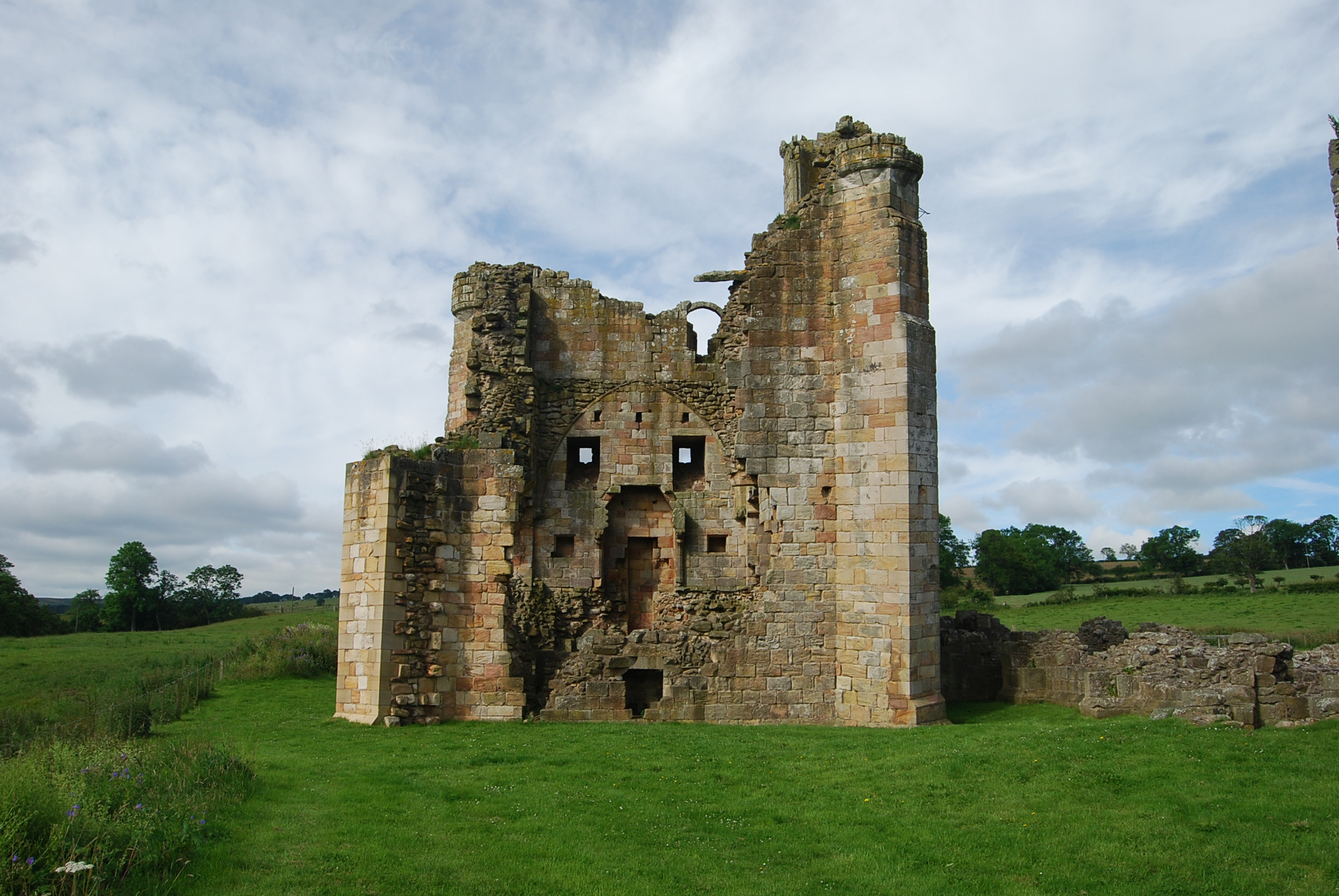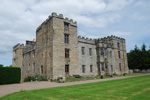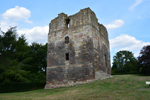History
Edlingham Castle was built in the late 12th century when John of Edlingham constructed a significant two-story Hall House containing a hall, parlor, chambers, kitchen, bakehouse, brewhouse, and service rooms surrounded by a moat, which was fed by nearby springs.

Given its location in England with proximity to neighboring Scotland, the structure's architecture was greatly influenced by the continual need to protect it from attack during centuries of ongoing conflict characterized by warfare, border raids, and instability. In 1294, ownership of the Edlingham Castle reverted to Sir William de Felton, who fortified the Hall House by building a palisade wall inside the moat and gatehouse on the north side.
William's son, also named William, embellished its defenses between 1340 and 1350 by erecting a solar tower south of the hall connected to the Hall House via forebuilding, which included an external door equipped with a portcullis to regulate passage. Additional enhancements included the construction of a gate tower and curtain wall. From this point of time onward, the Hall House was formally considered a castle. Towards the end of the 14th century, the enclosure walls were completed, and the gatehouse was enlarged.
In 1514, George Swinburne, constable of Prudhoe, purchased Edlingham Castle from the Hastings family. Upon ownership by the wealthy Swinburne family, the castle's purpose slowly changed from defense to comfort. Interestingly, ground floor rooms of the hall were converted to lodging for farm animals. Swinburne's kin owned the castle until the 17th century when the lower chambers of the solar tower and vaulting began deteriorating. By 1661, the castle buildings were being used as a source of stone. Further ruin and theft of stonework continued into the 20th century. In 1978, English Heritage started excavations of the castle, and a few years later, in 1985, it secured portions of masonry for safety purposes and prevention of further structural collapse.
Castle Highlights
Edlingham Castle is nestled within a valley in Northumberland, England, guarding a passageway through the hills towards Alnwick. Today, little remains of the rampart walls; however, ample stonework of the solar tower exists to comprehend its extensive size.
Entry to the castle is free and accessible via footpath after parking near the old medieval Church of Saint John the Baptist, which is also worth a visit. As a safety precaution, walk carefully since loose stones, and uneven walkways constitute significant hazards. A thorough visit to both castle and church should only require about an hour. As Edlingham Castle is located close to Warkworth and Alnwick castles, I recommend visiting one of them to complete the day.
Edlingham Castle also has a legend.




